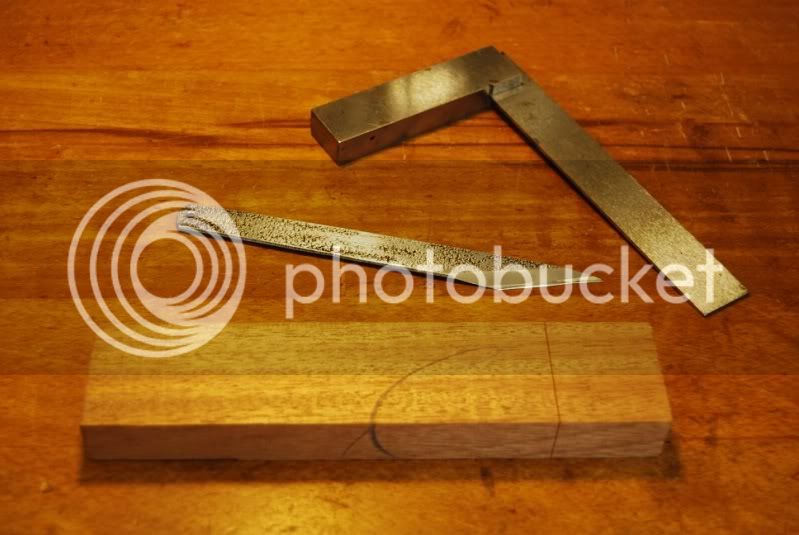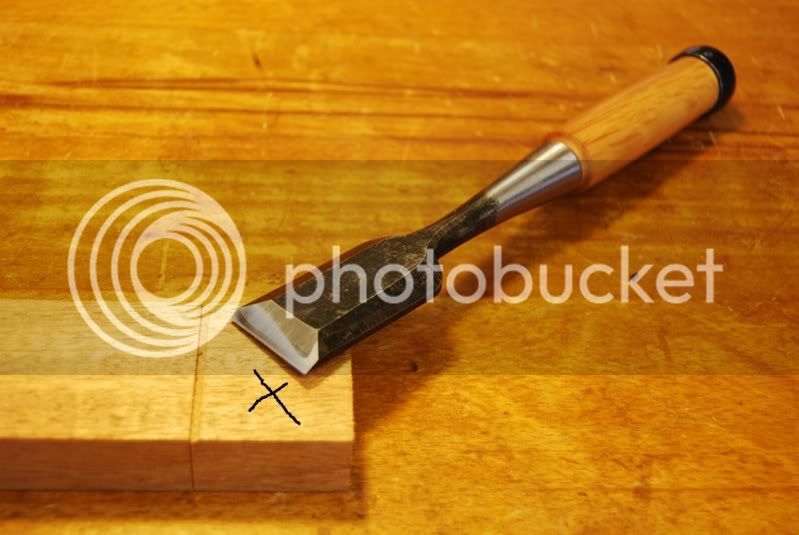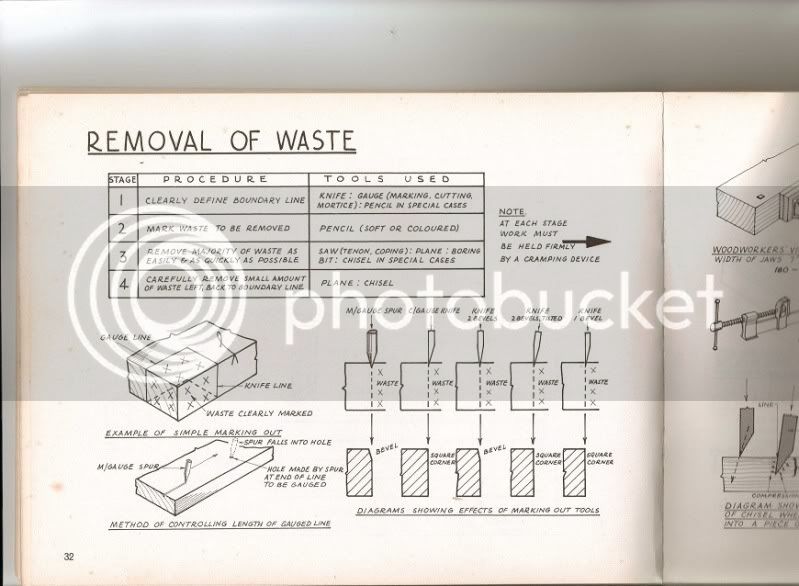dh7892":35mobxfx said:
Jacob, can you talk me through your reasoning behind pencil rather than knife lines? I'm at the beginning of my hand sawing journey but I've found knife lines to be more accurate and you can then feel the blade locate into the cut.
If you have any sense, I advise you for the sake of your sanity to disregard most of what this individual spouts...most of it (not all :roll: ) is complete and utter tosh and will not aid you in trying to do better joinery.
A previous post mentioned striking a line all the way round, this is the correct and most accurate way of marking out. In the sequence below, I'm going to cut this lump of mahogany in half. Firstly, mark the face side and face edge as shown, then placing the square
only on these two datum faces, strike a deep...say again, deep line all the way round:
Then on the waste side of the line (X in the pic) make a shallow groove with a wide chisel, such that one side is the vertical knife line and the other is sloping,made by the chisel:
Then using a bench hook, drop the saw into the groove so the teeth are hard against the vertical side of the groove and carefully saw down. If the sawcut is accurate, the knife line cut will be seen (arrowed)
all the way round on the face revealed:
I get extremely irritated :evil: :evil: when I see such blatantly poor advice given to someone trying to learn the basics in order to produce better work. Cutting to a pencil line
never has been and
never will be the right way to do the job...it might be of some interest to know that the individual in question has also been banned from another forum I frequent and was also banned from UKWorkshop at one time.
...and furthermore, this is the way I taught it in secondary schools for twenty years to eleven year olds!
Apologies for the rant - Rob









